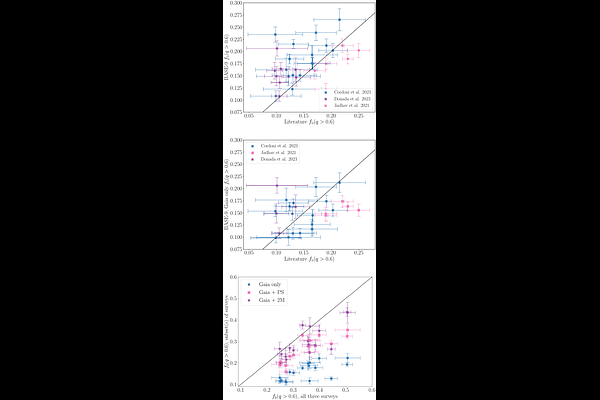Stellar Dynamics in Open Clusters Increases the Binary Fraction and Mass Ratios: Evidence from Photometric Binaries in 35 Open Clusters

Stellar Dynamics in Open Clusters Increases the Binary Fraction and Mass Ratios: Evidence from Photometric Binaries in 35 Open Clusters
Anna C. Childs, Aaron M. Geller
AbstractUsing the Bayesian Analysis of Stellar Evolution-9 (BASE-9) code and Gaia DR3, Pan-STARRS, and 2MASS data, we identify photometric binaries in 35 open clusters (OCs) and constrain their masses. We find a strong correlation between the binary fraction and cluster dynamical age and an even stronger correlation between core binary fraction and cluster dynamical age. We find the binary mass-ratio (q) distribution of dynamically young OCs is statistically distinct from that of the old OCs. On average, dynamically young OCs display multi-modal q distributions rising toward unity and toward our detection limit of q=0.5 while more dynamically evolved clusters display more uniform q distributions often with a peak near q=1. Interestingly, the uniform q distribution with a peak near q=1 is consistent with binaries in the field. We also observe a similar transition from multi-modal to unimodal q distributions when comparing low mass to high mass OCs in our sample. Lastly, we find a correlation between the median q of the binary population in a cluster and the cluster dynamical age. We interpret these results as an indication that dynamical encounters tend to increase the fraction of high-mass-ratio binaries within a given cluster -- particularly within the cluster's core where stellar dynamics are likely more important. This may be the result of stellar exchanges that tend to produce binaries with larger q and/or the preferential disruption or evaporation of lower q binaries.